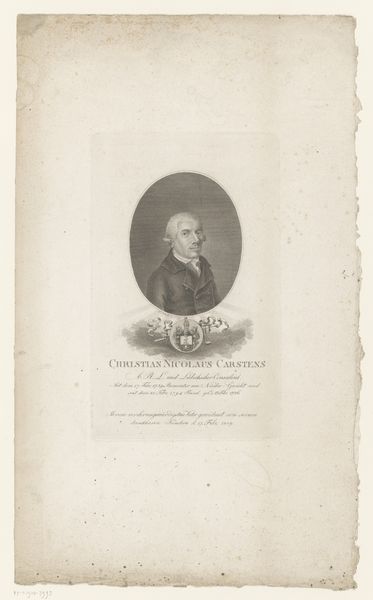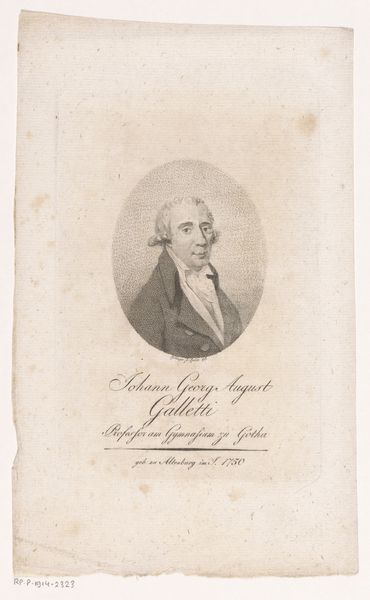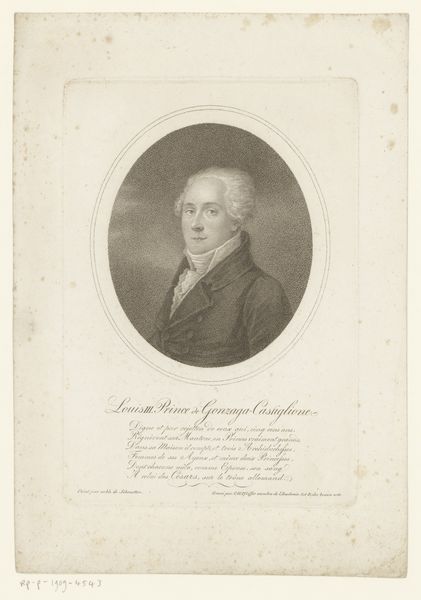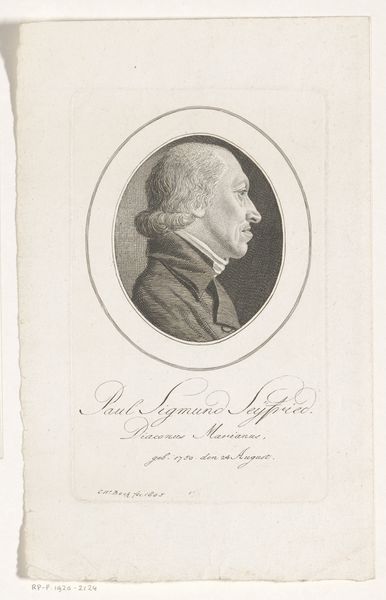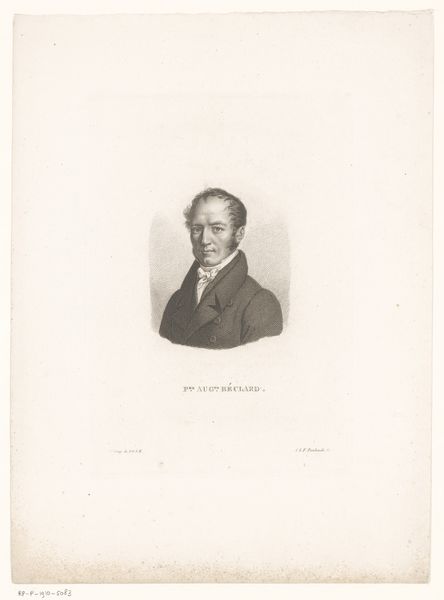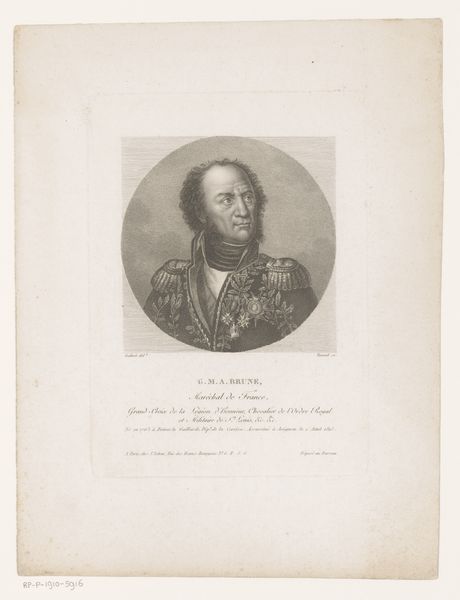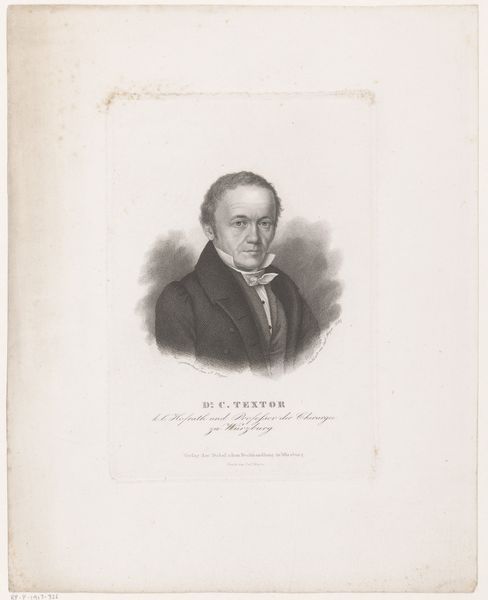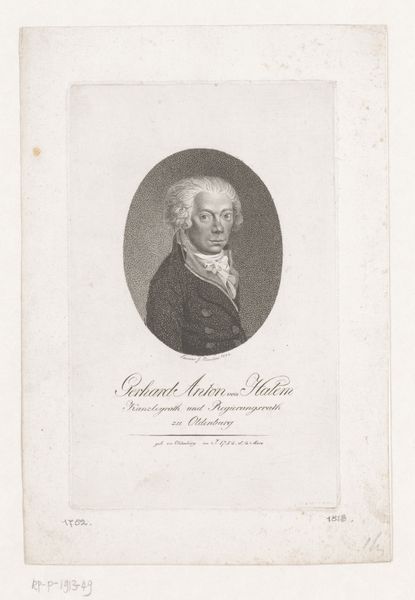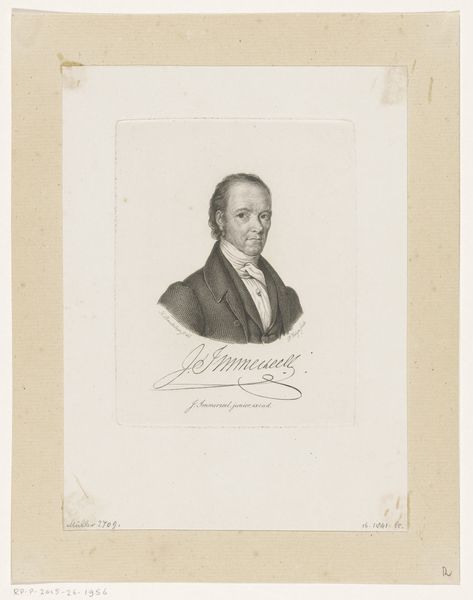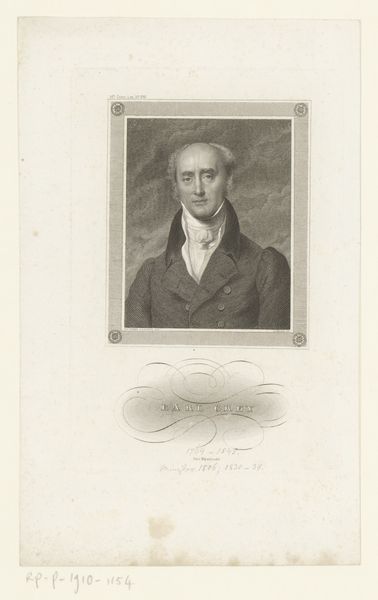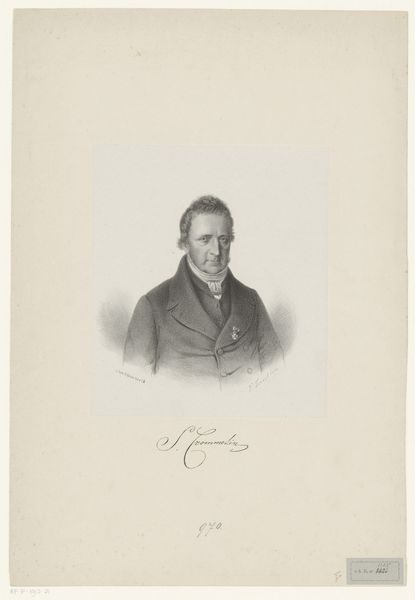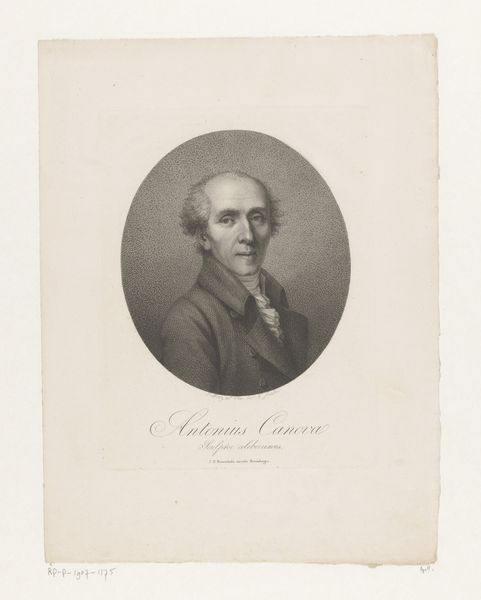
print, paper, engraving
#
portrait
#
neoclacissism
# print
#
paper
#
engraving
Dimensions: height 145 mm, width 93 mm
Copyright: Rijks Museum: Open Domain
Editor: This is "Portret van Wilhelm Ludwig Gottlob Freiherr von Eberstein," a print on paper done between 1803 and 1836 by Anton Wachsmann. The subject's stern face, framed in that oval, it feels…serious. Very neoclassical. What do you see in it? Curator: Serious indeed, like a history book opened to a very important chapter. But look closer! The man's eyes—there's a glint of mischief, wouldn't you say? I always imagine him winking right after this portrait was finished, just to break the tension. Consider how the artist chose engraving; so precise, yet allowing for incredibly subtle shading. It speaks of control, yet the finished piece hints at a livelier soul than we might initially assume. Editor: A wink? That's not how I pictured a baron from this era. But that controlled shading *does* make sense. It's like the artist is saying, "I'm following the rules, but watch what I can *really* do.” Curator: Precisely! And rules are meant to be bent, even in art, right? Maybe Herr von Eberstein wasn't quite as buttoned-up as his portrait suggests. Or maybe the artist found his spirit against the demands of formality. Do you feel a certain rebelliousness humming beneath the surface? Editor: I do now that you mention it! The subject’s stance looks formal, but his personality might've been more dynamic than he's allowed to show here. The artist teases out those conflicting demands nicely. Curator: Yes. And art helps us spot, and tease out, those undercurrents. Editor: Makes you wonder what other secrets are hiding in plain sight in these portraits. Thanks for the perspective!
Comments
No comments
Be the first to comment and join the conversation on the ultimate creative platform.
